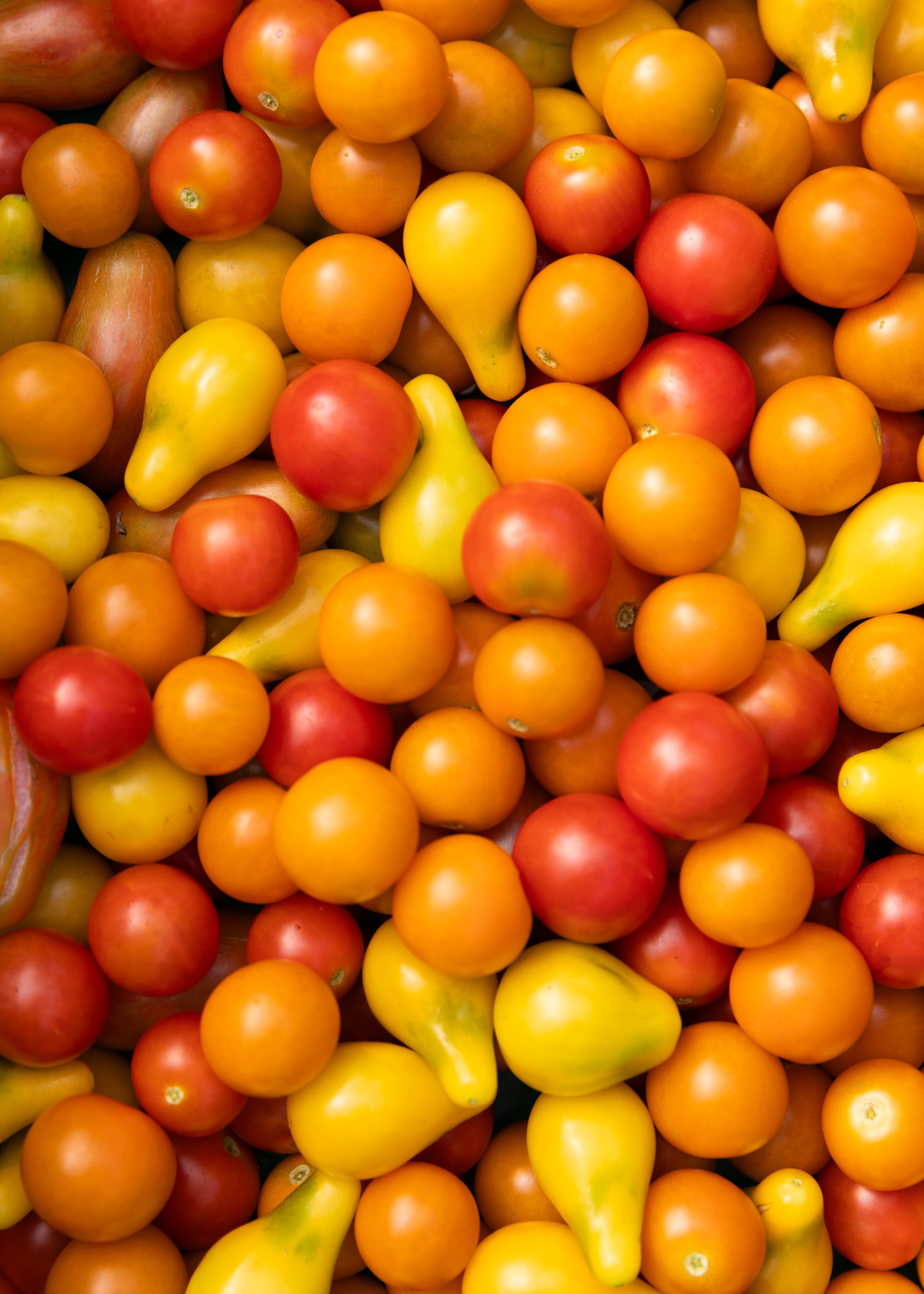Tomato Season at Wonka’s Harvest: Our Growing System and Reflections
Tomatoes are a staple crop found in diets across the world and have been cultivated for many centuries. At Wonka’s Harvest, tomato season is one of our favorite times on the farm. Every summer, our greenhouses burst with the colors from our cherry, grape, heirloom, and slicing tomatoes, and we’re constantly tweaking and reflecting on our practices to improve yield, reduce disease, and grow the tastiest fruit we can.
After five years of growing tomatoes and seeking ways to improve each time, we’ve landed on a system involving five key factors that keep our tomatoes juicy and delicious: greenhouse production, Q-lip trellising, heavy pruning, pest and disease management, and a wide variety selection. This blog is our way of sharing how we currently grow tomatoes and why we do it this way—plus what we’re still learning.
Why We Grow in the Greenhouse
Our tomatoes live in the greenhouse—not the field—and for good reason. We’ve trialed field-grown tomatoes before, but we kept running into issues with pests and disease. The greenhouse lets us plant earlier in the season and gives us more control over the growing environment.
Some perks of the greenhouse setup:
Automated drip irrigation that adjusts with the weather
Fans to keep airflow strong (so important for preventing mold and mildew)
A great structure to support our trellising system
Fewer pest problems (though definitely not zero!)
We use automated drip tape that lets us conserve water and maintain consistent watering to avoid split or cracked skin and controlling blossom end rot. We rotate greenhouse plots each year to protect soil health and reduce disease carryover from previous crops.
Our Trellising System: Based on the Neversink Method
If you’ve spent any time in the market farming world, you’ve probably heard of Neversink Farm. Our trellising system is modeled after theirs, using Q-lip clips, trellis hooks, and two support strings per plant.
Once our tomato plants are around 18 inches tall, we start clipping them to the trellis lines. It’s a clever but straightforward two-clip system: one clip acts as a guide, the other as an anchor. As the plant grows, we re-clip—switching the roles of the clips—so the support moves up with the plant.
Eventually, the plants reach the top of the hook, and that’s when we start leaning them. Leaning lets the plant continue growing while staying accessible for harvest. No ladders needed!
This method has worked really well for us. It keeps the plants upright, improves airflow, and makes daily maintenance much easier.
The Pruning Process: Why We Go Hard
Trellising and pruning go hand-in-hand, and we take our pruning pretty seriously.
Our goals with pruning are to:
Prevent disease from spreading (especially mold and blight)
Promote vertical growth
Keep the plants easier to manage and harvest
We remove yellowing or browning leaves regularly, especially lower ones that might touch the soil. We also remove suckers (the little shoots that grow in the elbow between a leaf and the main stem). Yes, suckers can grow fruit—but they also take energy away from the main stem and make trellising much harder.
We bucket up all the pruned plant material and compost it. The goal is to get diseased or excess material out of the greenhouse ASAP.
Pests and Disease: What We’re Dealing With
Let’s be real—tomatoes are high-maintenance. Between blights, mildews, and hornworms, it takes a lot of observation and prevention to keep the crop healthy.
Some of the main practices we rely on:
Pruning for airflow and disease prevention
Rotating greenhouses every season
Interplanting marigolds as a natural pest repellent
Checking fruit and leaves daily for damage
We’ve definitely seen our share of tomato hornworms, ground squirrels, and the occasional bunny raid. Hand-picking hornworms isn’t glamorous, but it works. We also remove any fruit that’s been damaged, so the plant can redirect its energy to producing new, healthy fruit.
Trellising helps here, too. Keeping the fruit off the ground makes it harder for pests to do damage—and easier for us to spot problems early.
This Year’s Tomato Lineup
We love growing a mix of tomatoes to suit all kinds of tastes and uses—from quick salad additions to full-blown BLT stars. Here’s what we’re growing in 2025:
Cherry Tomatoes
Super Sweet
Sungolds
Grape Tomatoes
Yellow Pear
Prairie Fire
Amai
Here we have a mix of our grape and cherry tomato varieties.
Roma Tomatoes
Speckled Romas
Granadero
Slicing Tomatoes
Green Zebra
Valencia
Wisconsin 55
Heirloom Tomatoes
Grandma’s Pick
Brandywine
Harvest Moon



Each variety brings something different to the table (literally). We enjoy seeing which ones our CSA members and market customers love most—and we usually end up with a few new favorites each year ourselves.
Looking Ahead
As with everything on the farm, our tomato system is always evolving. We’ve learned a lot in the last five years, and we’re still learning—from soil balancing to ergonomic clipping tools. There’s always room for better systems, healthier plants, and more efficient ways to grow food on a small footprint.
We hope this post helps pull back the curtain on what it takes to grow tomatoes the way we do. Whether you’re just curious about tomatoes, starting your first garden, or an experienced gardener or farmer, hopefully, you learned something new from following along with our process of growing tomatoes.
Stay tuned for more from the field, and as always, come say hi at market if you want to talk tomatoes!







